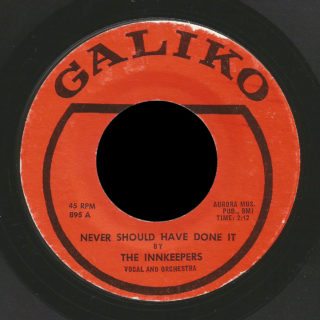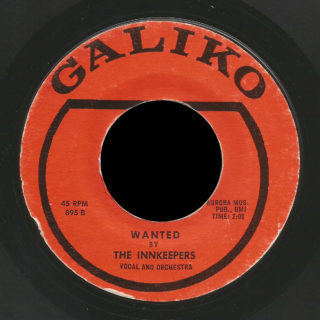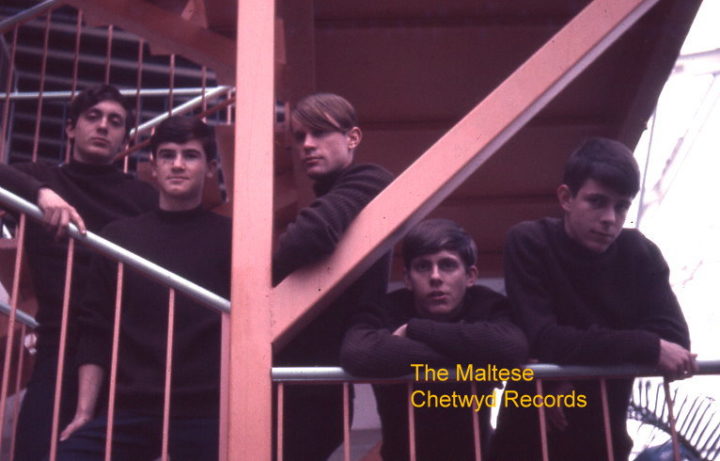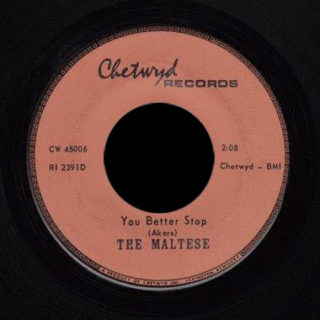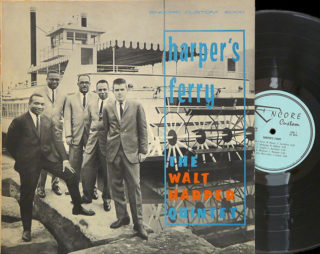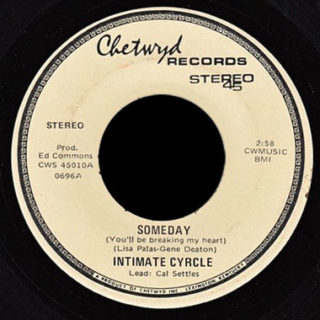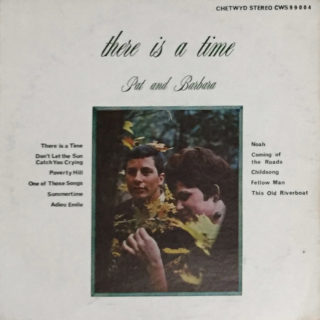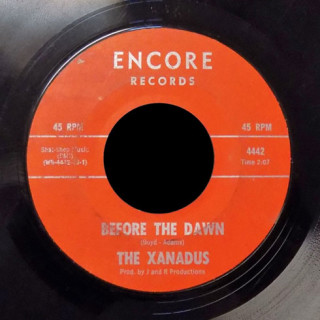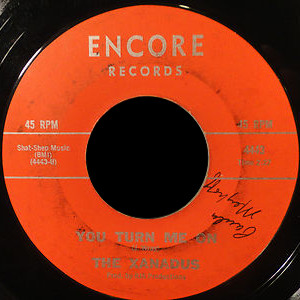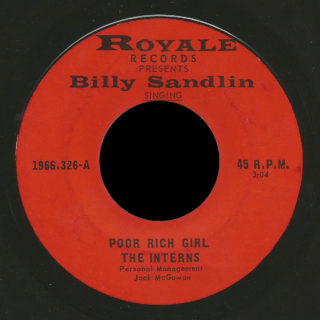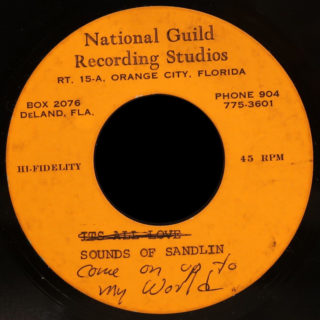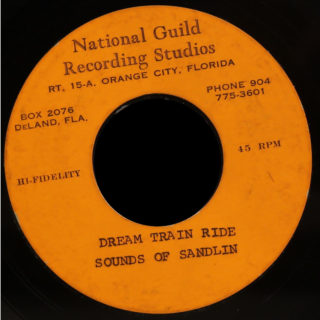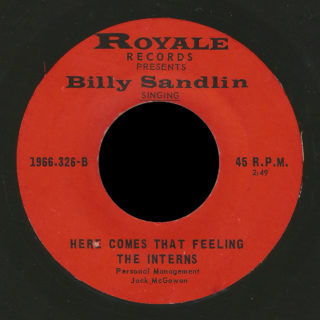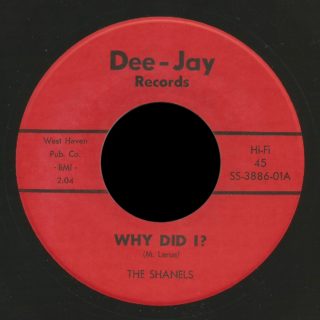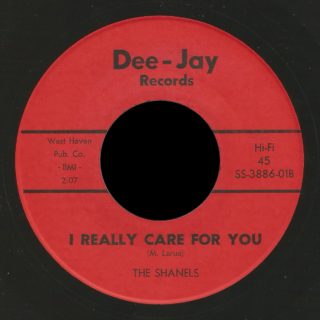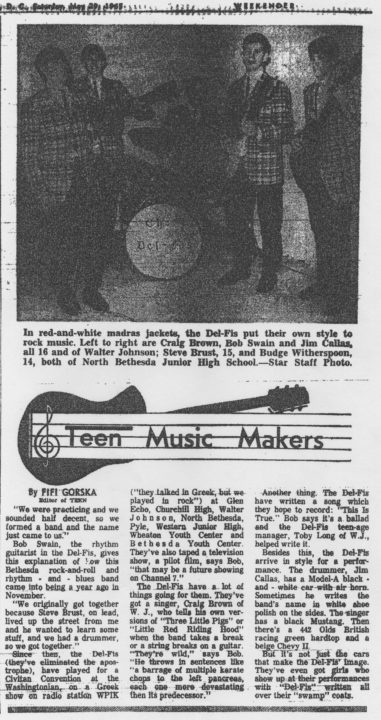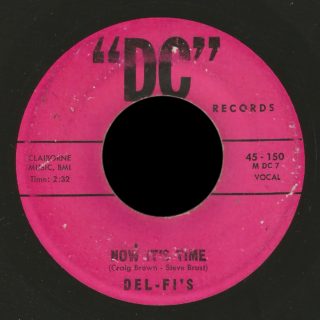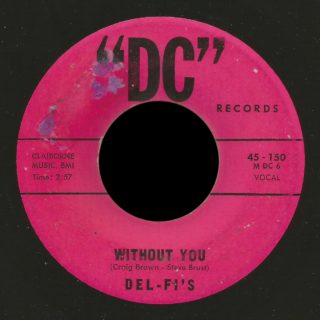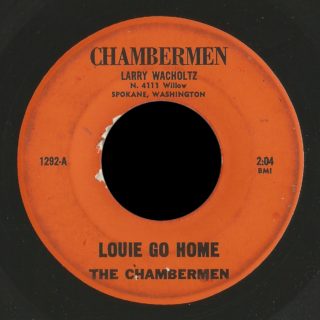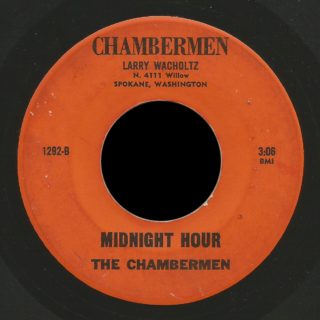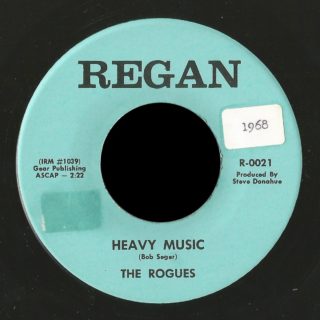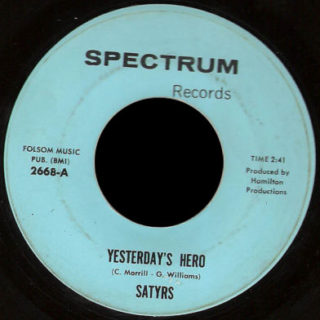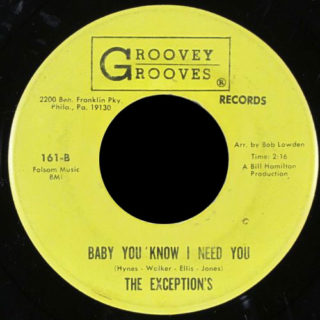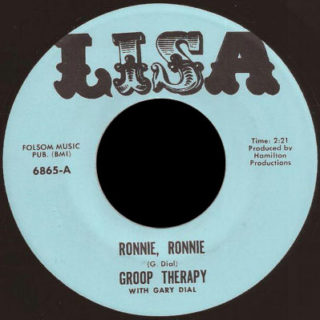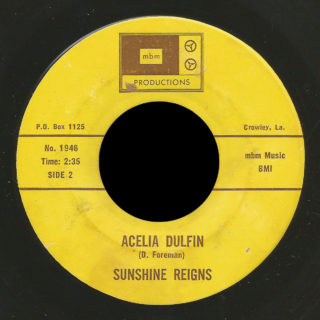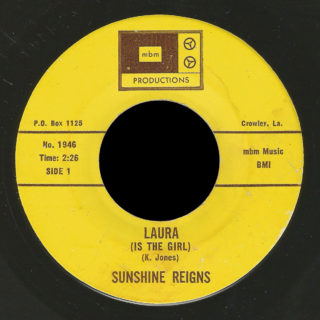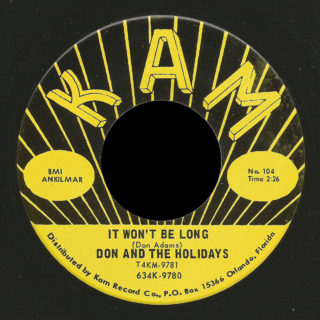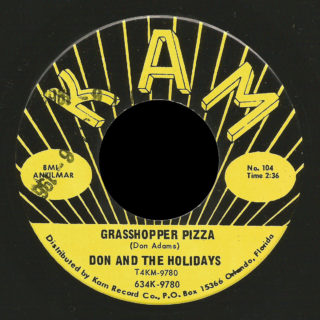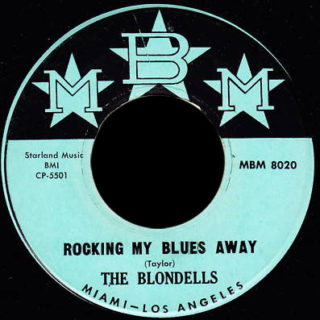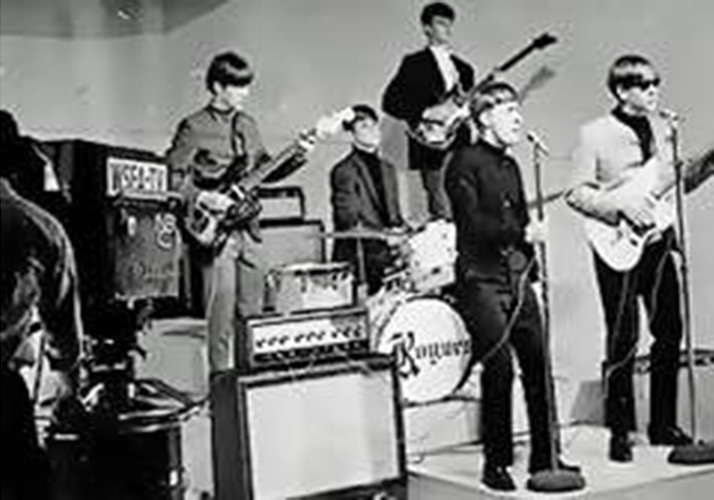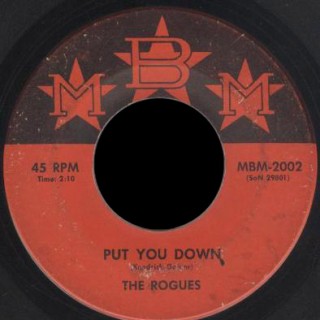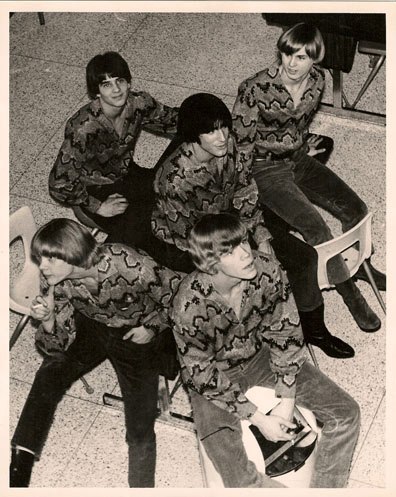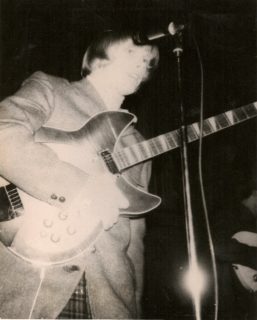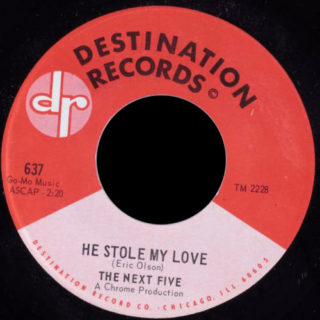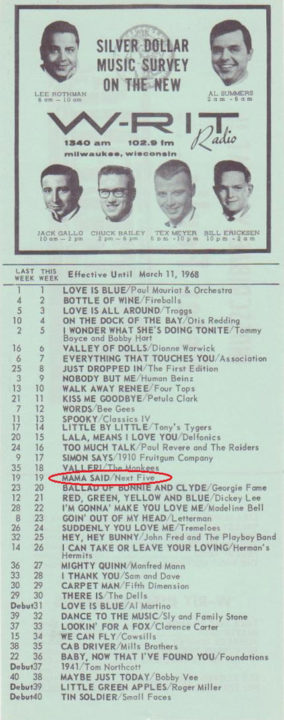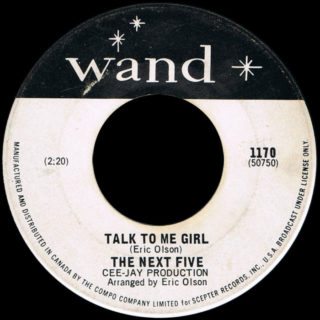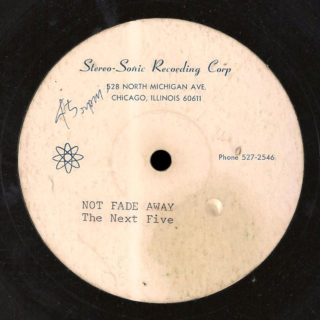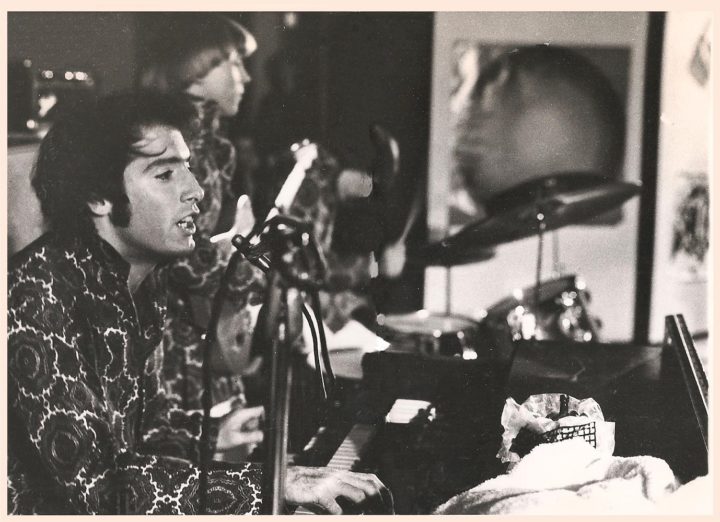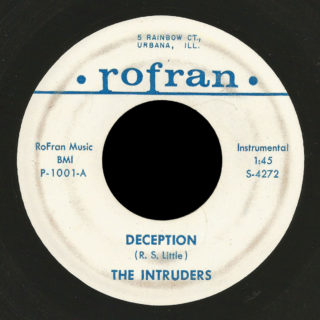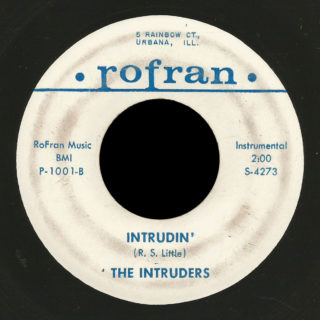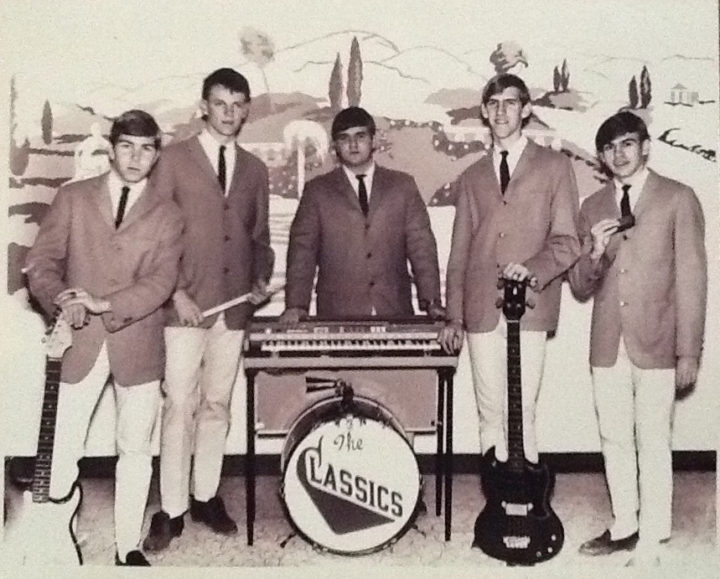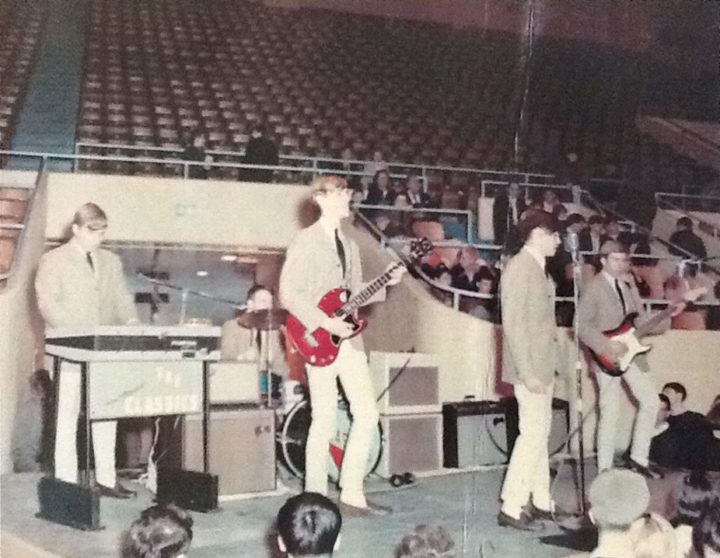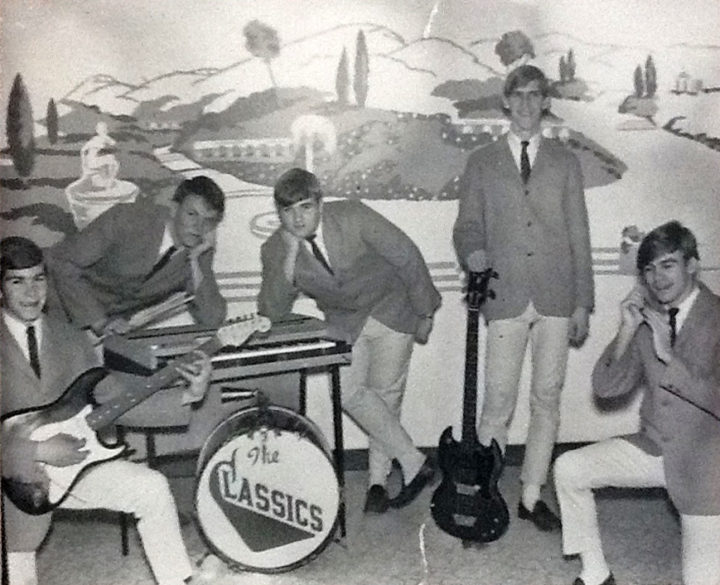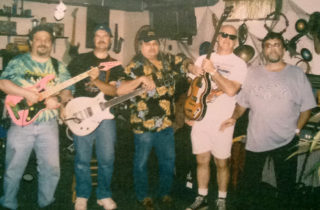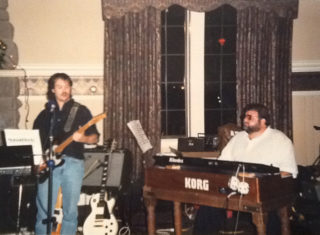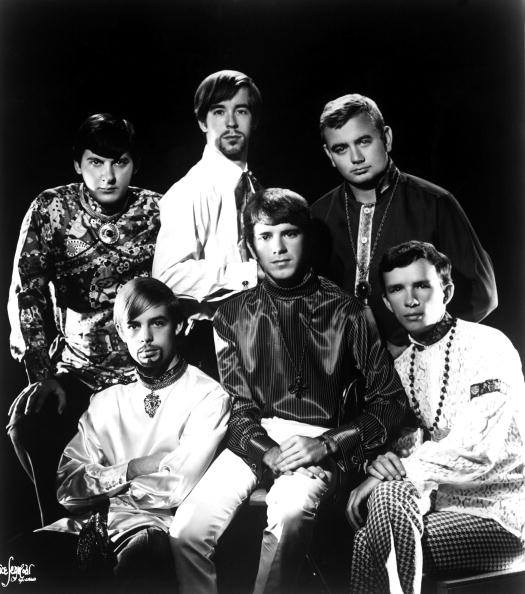
O’Kaysions (second generation, ca. 1968)
Top row L-R: Jimmy Hinnant (bass); Jimmy Spiedel (sax); Bruce Joyner (drums).
Bottom row L-R: Ronnie Turner (trumpet); Donnie Weaver (lead vocals/keyboards); Wayne Pittman (vocals/guitar).
Much has been written about the early O’Kaysions and their one hit; however, little is known about the group that followed and the handful of recordings they made for Cotillion Records. All but two members of the third generation O’Kaysions have since died and the bulk of the recordings they made in 1970 remain unreleased. The O’Kaysions would disband in the early seventies, following a series of personnel changes and missed opportunities.
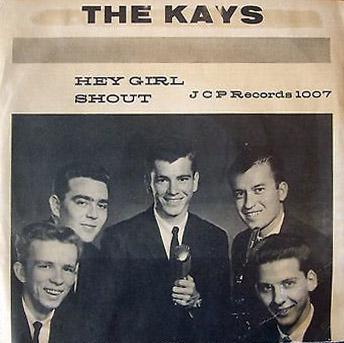
L-R: Wayne Pittman, Steve Watson, Donnie Weaver, probably Gerald Toler, Jimmy Hinnant.
The band formed in Kenly, North Carolina (south of Wilson) as The Kays. Lead vocalist and organist Donnie Weaver was from Rocky Mount and was just 12 when he joined The Kays. A decade later and with the same band at age 22, he sang lead vocals and played organ on “Girl Watcher” at Sound Studio in Greenville, NC, on February 8, 1968. He is also credited with coming up with a new name for the band, and from that point on they would forever be known as The O’Kaysions.
By 1968, the group had changed names and personnel. Weaver, guitarist Wayne Pittman, trumpeter Ron Turner, saxophonist Jim Spiedel, bassist Jimmy Hinnart and drummer Bruce Joyner were the second generation O’Kaysions. Steve Watson, Gerald Toler and Eddie Dement (drums, sax and trumpet, respectively) all performed on “Girl Watcher” but decided to stay with their day jobs rather than pursue fame and fortune on the road.
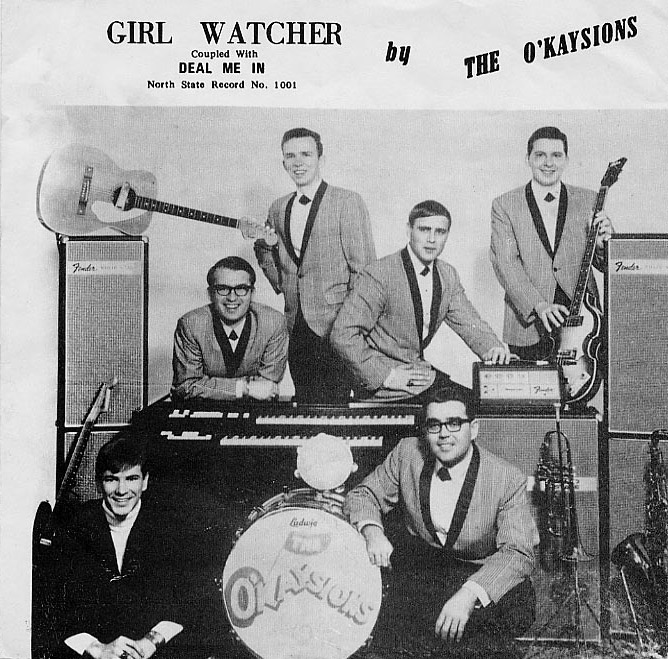
Front row: Donnie Weaver (vocals, organ); Steve Watson (drums).
Back row: Gerald Toler (sax); Wayne Pittman (guitar); Eddie Dement (trumpet); Jimmy Hinnant (bass).
Pittman penned the summer beach anthem and told Rick Simmons in his book Carolina Beach Music: The Classic Years that one of the band members suggested he write a song about girl watching because of his penchant for observing bathing beauties. Pittman recalls that he had already written the melody and added the lyrics, finishing the song in two nights. When Weaver was asked in the studio to help complete the chorus, he came up with the unforgettable “umm, umm, umm.” North State Records producer Buck Trail is given co-songwriting credit on the label, but Pittman composed the song and wrote the lyrics and Trail’s contribution was minimal.
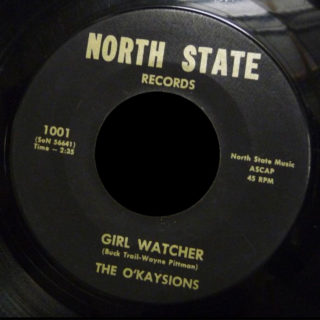
Game Artists promoter Ken Adkins says the O’Kaysions made the crude recording in “a broom closet studio in Greenville, N.C.” The song became a regional hit, with WBAG in Burlington playing the 45 (North State 1001) in heavy rotation. It caught the attention of Adkins and his boss, Bill Griffin, who owned Greensboro’s famed Castaways and managed Game Artists.
Griffin wanted to sign the band and enlisted Adkins and A&M Records promoter Manly May, who shopped the song to labels in New York. ABC Paramount picked it up (ABC 11094) and Pittman remembers that label executives flew down from New York to get the master tapes from North State and decided to rush release the song unchanged, while picking up distribution. It went on to reach #5 on the Billboard Hot 100 (and in Cashbox and Record World) in early October, peaking at #6 on the R&B chart and earning a gold record with one million in sales by December 1968. “Girl Watcher” was listed in the Top 10 for nine weeks and in the Top 100 for twenty-six weeks. The song is listed as the 45th biggest record of 1968 in Billboard’s listing (#44 in Cash Box) of the “Hot 100” songs of the year.
Griffin had a management contract with the group and arranged a six-week tour. ABC had signed lead vocalist Donnie Weaver to an individual contract, leaving Game Artists in limbo: They had a national hit with no band to promote it. Weaver, Pittman and Hinnart were willing to tour, but first they needed a drummer and some horns.
Adkins returned to Greensboro, where he says he hand-picked some of the area’s finest musicians to join the O’Kaysions in the studio and on tour. In the fall of 1968, the three original members were joined by newcomers Turner, Spiedel and Joyner to record the Girl Watcher album, which was was produced by Johnny Pate.
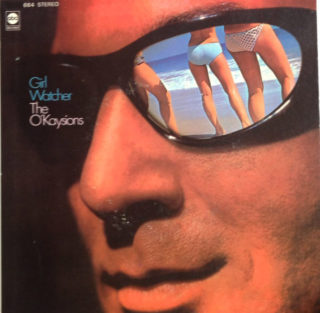
The “Girl Watcher” album (ABC LP ABCS-664) was recorded in two days to take advantage of the hit single and received a favorable review in the Nov. 9, 1968 issue of Billboard. “The soulful O’Kaysions, the “Girl Watcher” crowd who spilled from R&B into a top 10 pop power should strike hard at the LP chart with the debut dozen of breezy rock ‘n’ soul tunes. “Little Miss Flirt,” “Love Machine,” “My Song” and Don Weaver’s bluesy vocals herald the arrival of this top white soul group.” The LP did fairly well on the Billboard album charts, climbing all the way to #49 on the Rhythm and Blues LP list and peaking at #153 on the overall albums charts on Nov. 23, 1968.
“Love Machine” (ABC 11153) was chosen as the follow-up single and was listed as a “new release” in the Nov. 30, 1968 Billboard. It spent six weeks in the charts, stalling at #76 on the pop charts in late December. The song fared much better on the Cash Box charts and was chosen as the number one pick in the trade paper’s “Looking Ahead” forecast on Nov. 16, 1968, the week it debuted. “Love Machine” had risen to #47 by Christmas. It was the O’Kaysions last chart entry.
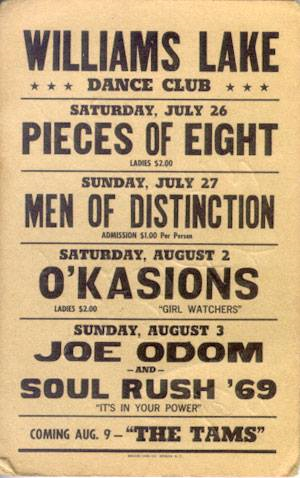
Management problems plagued the band from the start. Pittman says the people at North State thought they could sign the band with any booking agency they wished and inked a contract with Atlanta promoter Bill Lowery, without the band’s knowledge. The O’Kaysions felt Lowery wasn’t booking the group enough, so they canceled the agreement. The band next signed with Associated Booking in New York City. But Pittman says Lowery’s power and contacts in the industry “put the kiss of death” on the O’Kaysions and ABC was reluctant to put much money behind the band.
But while Weaver was tied to an individual contract with ABC, Griffin and Adkins had traveled to New York and signed the group to Atlantic Records. Atlantic would later front $15,000 for the O’Kaysions to record an album at the new, state-of-the-art Crescent City Sound Studios (formerly Copeland) in Greensboro, for release on their subsidiary, Cotillion Records.
Pittman was the next to leave. Donny Trexler was brought on board as his replacement on guitar, with drummer Gary “Groove” Pugh joining the band at the same time. Both were also excellent vocalists. Trexler was known for his gritty, soulful singing, while Groove brought a piercing falsetto voice to the mix.

Trexler began singing at age 9 in Summerfield, N.C. and was 14 when he formed his first band, Donny and the Blue Jets. Two years later, he joined the Six Teens, which consisted of six, 16-year-olds. Their drummer decided to defect to Allan and the Flames, a group that had a regional hit with the instrumental “Winter Wonderland.” Their drummer, Bob Collins, didn’t want to leave his job to go out on the road, so the bands switched percussionists. Several left to attend college and some older members were brought into the reformed band, now known as Chuck Tilley and the Fabulous Five. Chuck left or was fired in January 1962 and Bob Collins was chosen to front the band because, as Trexer recalls, “he could sing ‘Ooh Poo Pah Do’ and the Fats Domino catalog.”
But it was Trexler who would sing lead on the group’s 45, “If I Didn’t Have a Dime.” The song had been a minor hit for Gene Pitney but became the signature song for Bob Collins and the Fabulous Five. The band actually recorded the tune twice, first at Arthur Smith Studios in Charlotte and then at Copeland Sound Studios in Greensboro in 1966. The latter version was released on the Greensboro-based Jokers Three label and remains a beach music favorite. Trexler says the band got a group of teens “to come in from Guilford and High Point College and a couple of cases of beer and we had an audience!”
Trexler left the Fabulous Five in February of ’68 and was playing in the basement of the Rathskeller in Greensboro with Ted Carroll and the Music Era. The band had traveled to Florida for an extended engagement when manager Bill Griffin contacted Trexler and told him he was having problems keeping members in the O’Kaysions. With a hit record and a follow-up in the charts, it didn’t take much persuading to convince Trexler and Pugh to leave the Music Era and join the O’Kaysions in the first week of January, 1969.
Both were flown to New York City to provide backing vocals for the group’s next single, an upbeat cover of Gene Pitney’s “24 Hours from Tulsa.” Weaver sings lead but none of the O’Kaysions play on the track, which was recorded with session musicians at the Hit Factory in January of ’69. Trexler says that ABC called Johnny Pate (Impressions,Gene Chandler) to produce the sessions, although the label credits Bill Szymczyk and Game Productions. While he was brought on board as guitarist, Trexler said he didn’t take his instrument to New York and Billy Butler plays guitar on the song. Interestingly, Trexler was told the guitarist was the brother of singer Jerry Butler. The single’s b-side, “Colors,” is a curious ballad about the plight of the American Indian that features a strong vocal delivery from Weaver.
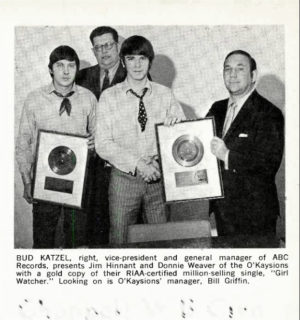
The record (ABC 11207) received a favorable review in the April 19, 1969 edition of Billboard and was listed in the “Top 60 Pop Spotlight.” The reviewer enthused that “the ‘Girl Watcher’ group bounces back with a strong item here, a clever revival of the Gene Pitney hit of the past, penned by Burt Bacharach and Hal David. Driving rock beat backs a strong vocal workout.” While “24 Hours from Tulsa” had all of the elements of a hit record, it failed to dent the charts.
But the band was about to undergo another drastic change. Lead vocalist and front man Donnie Weaver was about to leave the band for a solo career with ABC, while the band would record for Atlantic. Trexler says there were already rumblings of Weaver’s departure as early as January of ’69, although he would continue performing with the group through late August. After the New York sessions, Griffin and Trexler were walking down the street when his manager remarked: “You might as well get yourself prepared to really do something with this group because ABC is shooting to take Donnie away from us.” Griffin told Trexler he didn’t intend to stop them and asked that Trexler take over when that happened, adding: “You’re one of these people if I send you out on a job and there’s no place to play, you’ll build a place before the night.” While he insists it was never his intention to repIace Weaver, Trexler said it became apparent in the following months that “Donnie was not a happy individual.”
His first job as lead singer for the O’Kaysions came on a Labor Day Saturday night in 1969 at the Coachman & Four in Bennettsville, S.C. “We got notice on Monday or Tuesday of that week that Donnie wouldn’t be coming back,” says Trexler, because Weaver “had decided to do a thing on his own and ABC Records decided to stay with Donnie and not the group.”
Weaver left around August 1969. Jimmy Spiedel was drafted in the fall of that year and Ronnie Turner departed about the same time. Glenn Ingram was added on sax, along with trumpeters Tommy Hawk and Tim Moore.
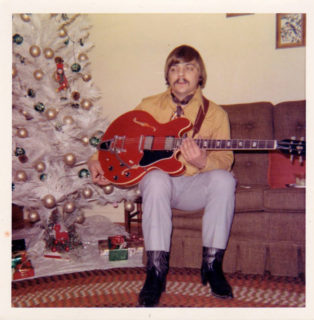
This line-up played a gig in Mississippi a couple of days before Christmas in 1969. The job wasn’t as memorable as what happened immediately afterwards. The band was headed home to North Carolina for the holidays when someone flagged them down to tell them the door on the band trailer was wide open. Somewhere along the way, Trexler’s Gretsch Country Gentleman guitar and Hawk’s Schilke trumpet had tumbled out onto the tarmac. “We doubled back at 3:30 a.m. to look for them but never found either,” recalls Trexler, “so a Gibson ES-335 was the replacement purchased by the group.” Trexler had warned the band repeatedly that the latch was bad and describes the episode as “an early nail the coffin.”
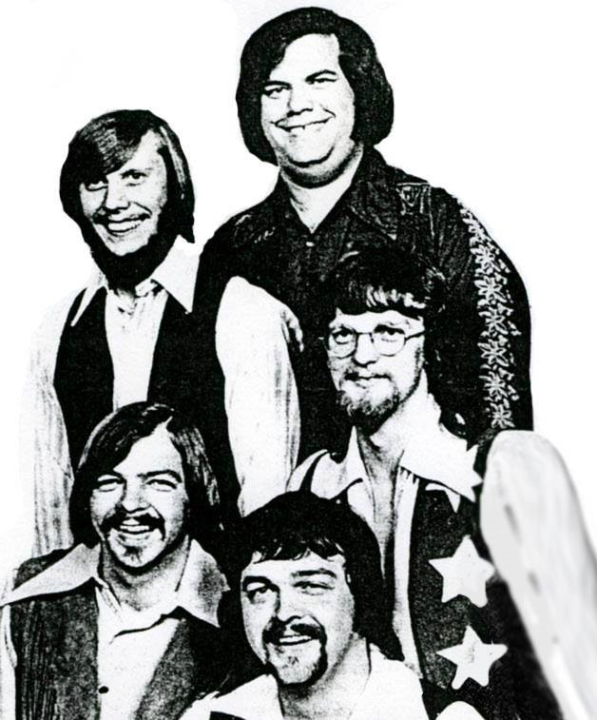
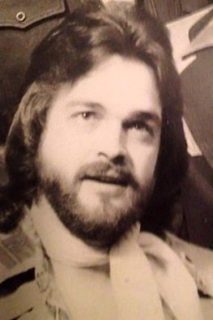
Trexler contends the eight-piece group “was not a workable unit,” and the O’Kaysions soon downsized, eliminating the horns. After the band regrouped, Moore joined Kallabash Corporation. According to Trexler the band “just kind of drifted for 6 months” before they hired Big Jim Lowry (guitar/vocals), Allen Brewer (bass/vocals) and former Tropics drummer Lenny Collins in “late February of early March of 1970.” Groove Pugh had some problems and left the group until they were resolved. He returned and they continued with two drummers. The group now had the strength of two lead vocalists and a pair of excellent guitarists. While no longer playing in the O’Kaysions at this point, Jimmy Hinnant was the group manager. Hinnant and Ken Adkins ran the day-to-day operations of Game Artists and kept the band working.
This was the line-up that Lost Soul keyboardist Steve Calfee booked for the Blue Toad, a college club in Bluefield, WVA. Calfee said he was amazed, adding “they did ‘Girl Watcher,’ of course, but most of the evening they did everything from the Allman Brothers first two albums, blues and some killer rock and roll. Knocked our little beer hall right on its butt (and) Donny and Big Jim did some great double guitar solos.”
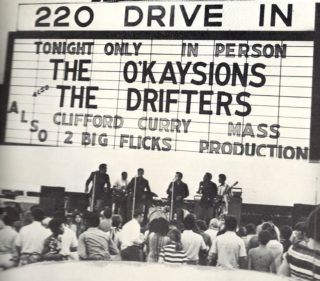
Art Kramer was playing tenor sax in Mass Production when the group shared a bill with the O’Kaysions at the 220 Drive-In near Martinsville in May 1970. His group also supported singer Clifford Curry. The Drifters also performed but it was the O’Kaysions who topped the bill. Kramer remembers that “the O’Kaysions were down to a five-piece band at this time… didn’t have any horns.” He recalls that they had “a good sound (and) you could tell the band had been together for a long time.”
Trexler maintains this line-up was the best on stage, noting “the group was very versatile; we all played different instruments in the show.” The five-piece configuration toured extensively along the East Coast, playing military bases and clubs like the Magic Attic in Myrtle Beach. But their songs were hard-edged and had little in common with the beach music generally associated with the band.
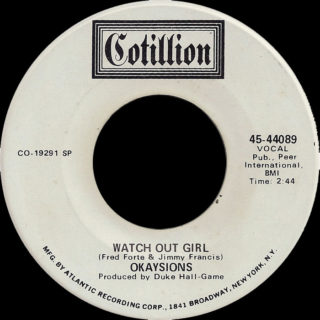 Their first Cotillion single, “Watch Out Girl” (Cotillion 44089) backed with “Happiness,” was recorded at Walt Copeland’s new Crescent City Studios, in the spring of 1970. Allen Brewer played bass, with Trexler on guitar and lead vocals. The band borrowed drummer Clayton “Red” White, from Bob Collins’ band, with Duke Hall on keyboards. Hall was the arranger and producer for Game Artists. Trexler says the horns were some players from A&T State University, supplemented by musicians from the Peace Core, formerly known as the In-Men LTD. While Trexler believes the strings were added later by Atlantic, Ken Adkins recalls that Hall “hired great string and horn players who were in town for the Eastern Music Festival held annually at UNCG.”
Their first Cotillion single, “Watch Out Girl” (Cotillion 44089) backed with “Happiness,” was recorded at Walt Copeland’s new Crescent City Studios, in the spring of 1970. Allen Brewer played bass, with Trexler on guitar and lead vocals. The band borrowed drummer Clayton “Red” White, from Bob Collins’ band, with Duke Hall on keyboards. Hall was the arranger and producer for Game Artists. Trexler says the horns were some players from A&T State University, supplemented by musicians from the Peace Core, formerly known as the In-Men LTD. While Trexler believes the strings were added later by Atlantic, Ken Adkins recalls that Hall “hired great string and horn players who were in town for the Eastern Music Festival held annually at UNCG.”
Drummer Red White remembers the band doing a sound check when a “squeak” was heard in the playback. The engineer isolated it to his Speed King bass drum pedal. “I always kept (and still do) a can of 3-In-One oil in my drum case to keep my pedal at top speed. One drop to each spring piston and we were recording.” White still uses that same bass pedal to this day.
The flip side, “Happiness,” is a beautiful ballad with an infectious chorus. Penned by Trexler, the song incorporates horns and a nice string arrangement. He sings the double-tracked vocal and plays acoustic and electric guitars. The acoustic used on the session is a 1934 Gibson Model L-00, which Trexler purchased from his uncle for $50 when he was 10. The same guitar was used on dozens of jingles he recorded at Crescent City Studios in Greensboro. Trexler performed the song as a solo artist for a TV broadcast on TBS while the O’Kaysions performed a three-week run in Atlanta in 1971.
Griffin shopped the master tapes to Atlantic because Groove and Donny were still under contract with the label through their work with the Music Era. The 45 was one of the first Cotillion releases following the massive success of the “Woodstock” album and the single was a Top 20 pick in all three trades: Record World, Cashbox and Billboard. That helped the group gain an appearance on Dick Clark’s American Bandstand in mid-October, where Trexler mimed “Watch Out Girl” and Weaver’s vocal on “Girl Watcher.” Groove couldn’t make the show and Collins sat on the drum throne.
Billboard gave the record a rave review in the Sept. 20, 1970 edition, pegging the song in its “Top 20 Spotlight” of 45s predicted to crack the upper reaches of the Hot 100. “Watch Out Girl” was singled out with the Jackson Five’s “I’ll Be There” and CSN&Y’s “Our House” as surefire hits, with Billboard enthusing “the ‘Girl Watchers’ gang move to the Cotillion label with a blockbuster single that will get them back at the top of the Hot 100 and Soul charts (with) a top vocal workout flip, “Happiness.” Unfortunately, it was not to be and the song sank without a trace.
While on the West Coast, Trexler did an interview on Wolfman Jack’s radio show before the band returned home for a heavy schedule of touring in Florida, Georgia, the Carolinas and Virginia.
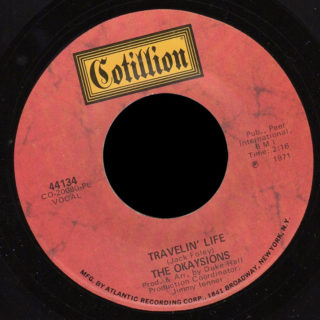 The third generation O’Kaysions were in the studio in Greensboro in the summer of 1970 to record a follow-up and an album that languishes in the vaults to this day. On reflection, “Travelin’ Life” b/w “Life and Things” (Cotillion 44134) seems like an odd choice for a single, but Trexler explains that “Duke Hall wrote them and they were published by Griffins Publishing Co.” Trexler sings lead and plays guitar. Hall was again the producer/arranger and played keyboards, while Brewer was on bass. Trexler believes Lowry played a second guitar on the recordings, with Collins on drums “and hired union musicians” rounding out the band. Jimmy Ienner (Three Dog Night, BS&T, Raspberries) was the production coordinator. Trexler recalls that Ienner was production manager for all Cotillion releases at the time and was “very interested in the group but did his homework and decided to stay clear.”
The third generation O’Kaysions were in the studio in Greensboro in the summer of 1970 to record a follow-up and an album that languishes in the vaults to this day. On reflection, “Travelin’ Life” b/w “Life and Things” (Cotillion 44134) seems like an odd choice for a single, but Trexler explains that “Duke Hall wrote them and they were published by Griffins Publishing Co.” Trexler sings lead and plays guitar. Hall was again the producer/arranger and played keyboards, while Brewer was on bass. Trexler believes Lowry played a second guitar on the recordings, with Collins on drums “and hired union musicians” rounding out the band. Jimmy Ienner (Three Dog Night, BS&T, Raspberries) was the production coordinator. Trexler recalls that Ienner was production manager for all Cotillion releases at the time and was “very interested in the group but did his homework and decided to stay clear.”
The sessions for the single coincided with the recording of the group’s second album, which featured songs written by both Trexler and Duke Hall. Hall, who is best remembered for producing some of the Platters later hits, had the financial backing of Atlantic, which – according to Trexler — had advanced Griffin $15,000 for the sessions.
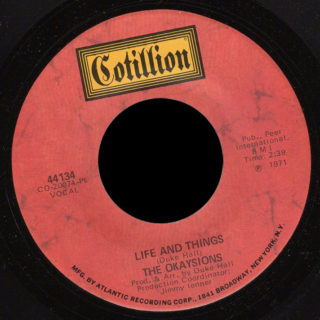
Another ode to life on the road, “Travelin’ Life” boasts a strong, raspy vocal from Trexler, who explains that the effect was intentional. “Duke always liked to record late at night after I had sung all night because he said my voice sounded better,” recalls Trexler. He says the strain in his voice is audible, explaining that the song “was pretty rough, but that’s the way Cotillion said they wanted my voice to sound.” The flip side, “Life and Things” features a harmonica and fuzz guitar but sounds as though it was hastily recorded as a throwaway track. Trexler again sings lead and plays the wah-wah guitar solo.
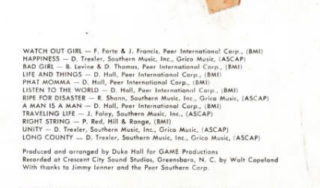
With four songs in the can, the group needed another eight to round out the album. Four of Hall’s tunes were recorded, along with three by Trexler, including the unreleased songs “Long County” and “Unity.” Ken Adkins recalls that two songs were recorded at the insistence of Atlantic Records “as a favor to some publishing company.” Hall’s composition, “Phat Momma,” was a standout, as was Piano Red’s “The Right String (But the Wrong Yo-Yo).” Other unreleased tracks include “Bad Girl,” “Listen to the World,” Ripe for Disaster,” and “A Man Is A Man.”
Ken Adkins was in the studio and says he “loved ‘Phat Momma’ when Donny Trexler recorded it,” adding: “I thought that O’Kaysions’ album really smoked with a bunch of great songs. They even did an arrangement I suggested of a very funky version of “Right String.” He still wonders why the label chose not to release the album, calling it “the best stuff ever recorded by Game.”
Trexler has his own ideas about why the album was shelved. While he and his band mates had spent “a lot of hours” in the recording studio, Trexler contends that Cotillion became disenchanted with the group’s management after “part of the money designated for a comeback album for the O’Kaysions (was spent) on other group projects.”
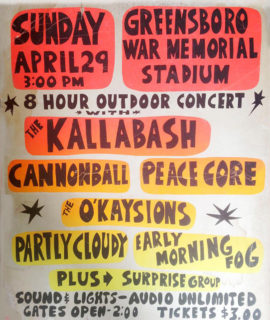
While the group continued touring, Trexler insists “the magic was gone” and he decided to leave the band, ending a three-year stint as an O’Kaysion. He had become disenchanted with the lack of direction and felt the group was headed nowhere. Trexler was also embarrassed to open for national artists like the Guess Who and Hamilton, Joe Frank & Reynolds when these groups had “top notch equipment and roadies,” (while) we carried and set up our equipment in front of thousands of people in the audience.” Trexler left in March of 1972 and formed the group Swing with Tim Callaway, Doug Bates and his future wife, Susan.
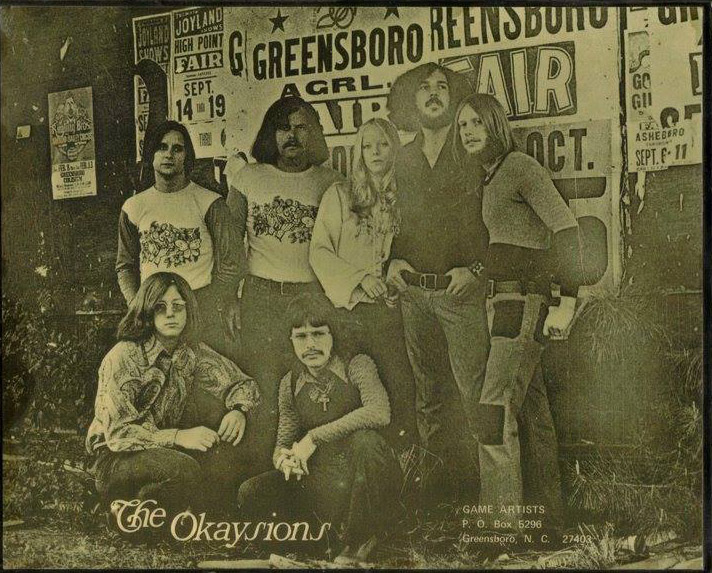
The O’Kaysions soldiered on briefly before finally calling it quits. Little is known about the last line-up, but Johnny Cobb took Trexler’s place on guitar. Jim Lowry and Gary Pugh continued with the group, joined by Frankie Prytle, Sylvia Lowry and Larry Miller. The group quickly morphed into the International Boogie Band and recorded one single for Game: “Drinkin’ Wine Spo-Dee-O-Dee”/ “Silver Dollar Lady” in 1972.
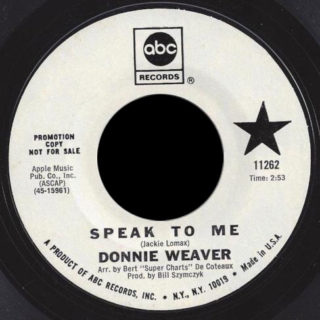 Weaver’s recording career with ABC was short-lived and yielded just one single – “Speak to Me” b/w “Sad, Sad Sam” — in 1970. The plug side was written by Jackie Lomax, guitarist in the British Invasion band, the Undertakers. The song was the opening track on Lomax’s 1969 LP on Apple Records, “Is This What You Want?,” which featured all four of the Beatles. Weaver wrote the flip side of the single but neither song received significant airplay. Both songs were produced by Bill Szymczyk, who had overseen the “Watch Out Girl” sessions earlier that year.
Weaver’s recording career with ABC was short-lived and yielded just one single – “Speak to Me” b/w “Sad, Sad Sam” — in 1970. The plug side was written by Jackie Lomax, guitarist in the British Invasion band, the Undertakers. The song was the opening track on Lomax’s 1969 LP on Apple Records, “Is This What You Want?,” which featured all four of the Beatles. Weaver wrote the flip side of the single but neither song received significant airplay. Both songs were produced by Bill Szymczyk, who had overseen the “Watch Out Girl” sessions earlier that year.
In 1972, Weaver moved to Riverside, California, where he joined bassist Gerald Davis and put together a band to record and perform some original songs. In 1979, Weaver met Chuck Leavell and Sea Level and recorded with some of the band members at Capricorn Studios in Macon, Georgia. He also toured briefly with Sea Level.
According to his official bio, Weaver left music in the eighties and nineties to focus on his career as a scientific computer consultant.
But his retirement was temporary and Weaver opened for Chicago at the Alltel Pavilion in Raleigh on June 16, 2001. He performed original songs to an audience of 15,000.
In November 2003, Weaver organized a reunion of all six original members of the O’Kaysions at the Alabama Theater in Myrtle Beach, S.C., to perform “Girl Watcher” for the Carolina Beach Music Association Hall of Fame Awards.
He was inducted into the Twin County Hall of Fame for Nash and Edgecombe Counties in 2009 and was still in fine form when he recorded the song “Truth” in 2012.
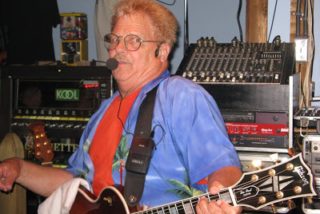
Donny Trexler continues to record and perform and appears regularly at private parties, clubs and restaurants in the North Myrtle Beach area. He and his wife, Susan, formed Swing in 1972 and the four-piece, Top 40 act toured the East Coast until 1988. At the time the couple, now married, formed Swing Too. The pair still record and perform together. Their 2007 c.d., The Edge of Paradise, contains standards and original material, including the popular “Tired of Pulling This Train” and “Inventory on Heartaches,” an updated version of the song Trexler wrote for Bob Collins and the Fabulous Five. He also remixed “Jukebox,” which remains a favorite during performances.
He was recognized by the industry in November 2000, receiving the CAMMY Award for “Lifetime Achievement.” The following year, Trexler was inducted into the South Carolina Rhythm and Blues Hall of Fame and received the Palmetto Award from the governor.
The O’Kaysions reformed in the eighties and remain a popular attraction on the beach music circuit. The current group is based in Columbia, S.C. and features three vocalists, trumpet, saxophone, drums, guitar, bass, and keyboards. Original member and guitarist Wayne Pittman manages the band, which plays a mixture Top 40, classic rock and the ever popular anthem to summer, “Girl Watcher.”
Jack Garrett, 2016
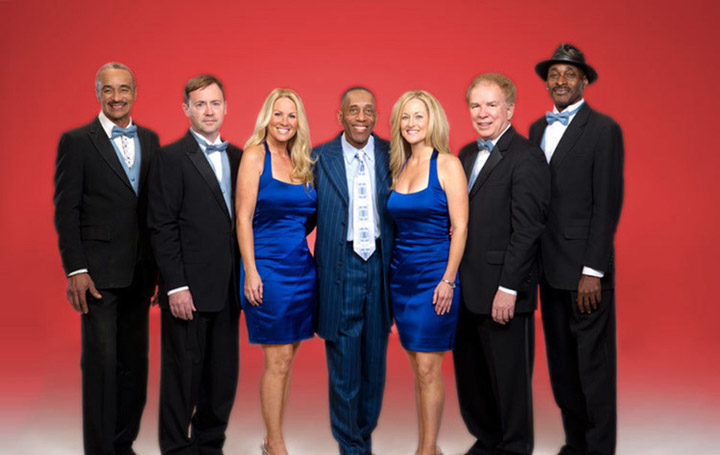
The post The O’Kaysions: Beyond Girl Watching appeared first on Garage Hangover.
